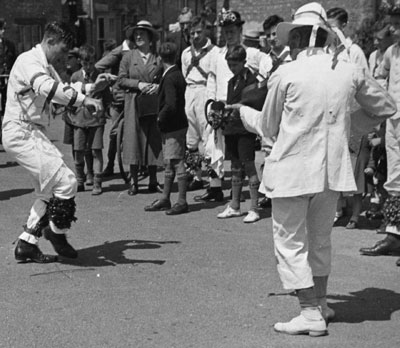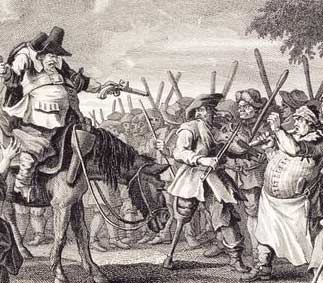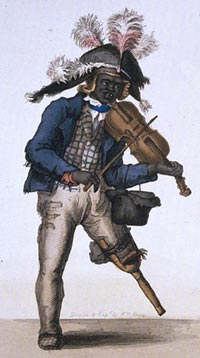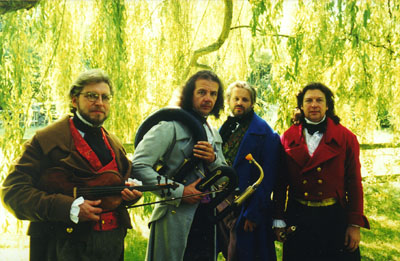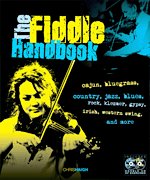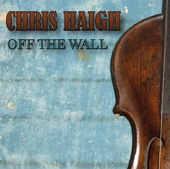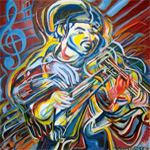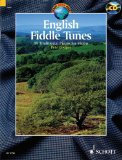
MENU TO FIDDLE STYLES:
English Fiddle
Is this really the true situation, and if so how did it come about?To understand the present situation we have to look back through several stages in the tradition's history; firstly the largely pre-industrial, pre-Victorian era; secondly the Victorian era, thirdly the 20th Century and up to the present.
There is little in the way of an unbroken line of tradition for the English fiddle, so most of what we know about pre- Victorian playing has been reconstructed from published music, written records and notes from the time. Paul Roberts in particular has invested a great deal of time and research in this area, and partly because of that, we have a fairly detailed picture of what role the fiddle played through the 17th and 18th centuries.
English Fiddle in pre-Victorian times
Many collections of country dances were published by English fiddlers and dance masters, and these, together with diaries and illustrations gives us quite a detailed picture of what fiddling was like in this period. We know that the fiddle was held not, as today, under the chin, but lower down on the chest or shoulder, angled downwards. Some players may have moved the fiddle along with (but in opposition with) the bow- a relic of medieval fiddle playing.
Various cross-tunings were common, including ADAE, AEAE and AEAC#; these were of value to the dance fiddler, adding volume, harmony and ease of fingering. The tone tended to be thin and harsh- a trade-off for increased attack and energy.
The predominant bowing pattern seems to have been what Americans call the Nashville Shuffle; a slur and two separate bows making a do-a da da, do-a da da rhythm; driving but at the same time flowing. Also in common with fiddling across the Atlantic, English fiddlers used a lot of drones and double stops. This again was an echo of medieval fiddling, from a time when the instruments were not designed so much with single-note playing in mind. The more advanced players, for whom the hornpipe was the "show-off" tune of choice, would have used less of these double notes.
In contrast to the very plain style of today, English fiddling in pre-Victorian times was highly ornamented. Melody notes were linked by long runs of semiquavers. The "birl" or "shiver" now so common in Scottish fiddling, was widespread. The mordent, used in classical music ( main note/ adjacent note/melody note) and the turn or roll (above/below/melody note) were common, as was the trill. Proof of this rich use of grace-notes comes in the remarkable form of programmed mechanical organs which recorded the way fiddle melodies were played. Paul Roberts describes this as "as close to a time machine with a tape recorder as we can get".
Fiddle tunes were played largely for accompaniment of dancing; which meant a great deal of repetition. However, the lack of a "listening audience" did not stunt the development of the ambitious fiddler: complex variations were played as the tune sequence was repeated; these were referred to as "divisions". These could either be written (or memorised), but frequently they were improvised. Manuals were published explaining how to go about this improvisation, and Roberts highlights close similarities with 20th Century jazz playing: "We learn that several fiddles might improvise together dixieland style, or take breaks in swing style. One book describes the practice of calling out "breve" very like the jazz practice of calling "fours" where each player takes four bars in turn"
Syncopation was also common. There were speciality pieces such as "The fox chase",where the fiddler broke all the rules of melody and rhythm, using trick effects to imitate the fox, hounds, horses and horns of a chase. Something very similar can occasionally be heard today in American old-time fiddle.
The most common key used were, naturally, the easy ones (G,D,A,Am, Em), but increasing use was made of more advanced keys such as C,F,Bb,E,Cm and Gm. Second and third position were also occasionally used, mirroring developments in "art music" of the time.
Hornpipes were the tunes on which many fiddlers invested most time and effort; they were the showcase tunes on which the fiddler’s technique could best be diplayed, and on which they were likely to be judged. They were indeed the tunes most likely to be played for fiddle competitions. They tend to be more intricate harmonically and melodically than jigs or reels, often including accidentals and non-diatonic chords. The hornpipe is thought to have originated in England, and was known in the time of Henry the Eighth. It is used for both step dancing ( a solo display dance, often done with clogs) and for set dancing (ie dancing in sets or groups, as in country dancing). It was as a solo step dance that the hornpipe was most exciting. Because the dance could be done on a single spot it was ideal for dancing on board ship or in a crowded pub; the dancer use it as an opportunity to show off to his mates- either of the ship or drinking variety. Stephen Baldwin (1873-1955) was one of the few English fiddlers to have been part of an unbroken tradition of hornpipe playing. In an article in Fiddle on Magazine, Philip Heath Coleman describes how Baldwin played for a gypsy wedding in the Forest of Dean; “Arriving at three o’clock in the afternoon, he stayed until 2 o’clock in the morning, perched on a tree stump and playing, in his own words, “nothing but hornpipes” to which the gypsies danced “with great vigour- the sweat simply rolled off them. They never seemed to get tired.”
Whereas hornpipes today are usually in 4/4, many of those from the 18th C are in 3/2 or 9/4 time- often referred to as triple hornpipes. These have a fascinating rhythm quite unfamiliar to anyone brought up on the standard Celtic or American repertoire, and some, such as Lads and Lasses, have a distinct syncopation. From the early or mid 18thC 4/4 hornpipes became popular. These were originally played with an even beat (like polkas or reels), but, possibly as a result of the introduction of the Schottishe around 1850, the even rhythm gave way to a dotted rhythm (as played for example on Harvest Home). This uneven rhythm is the one most commonly associated with hornpipes today- they are still used for country dancing, where the dancers do a “step-hop”. It is sometimes referred to as the Newcastle hornpipe style. Many dotted hornpipes were exported to America but eventually got straightened out, as for example with Fishers Hornpipe.
With all these different possible rhythms you might well ask how on earth you’re supposed to recognize a hornpipe. The answer lies at the end of each line, which whatever the rhythm will almost always end with three even crotchets (think of the Sailors Hornpipe for example).
Fiddling in Olde Englande was not the proud and respected profession it is today!
(Illustration from 18th C by Hogarth of the one-legged fiddler Crowdero, from a poem by Butler;
...I’the head of all this warlike rabble
Crowdero march’d, expert and able
Instead of trumpet and of drum
That makes the warrior’s stomach comeA squeking Engine he apply’d
Unto his neck on north east side
Just where the hangman does dispose
To Special Friends the knot of noose...
BILLY WATERS
Waters was a well known character in London; from the 1780's this black busker, a one-legged former soldier, used to play outside the Adelphi Theatre in the Strand. He would stepdance and play the fiddle at the same time, earning him the title, "King of the Beggars"
THE WEST GALLERY TRADITION
Unlike the situation in Ireland, where music was often restricted to the solitary, roving fiddler or piper, England had a long tradition (going back at least to the start of the 18th C) of village bands. The musicians were largely semi-professional; often artisans, craftsmen and farmers, playing as much for enjoyment as for money. We are lucky to have a detailed and authoritative source of information on these bands, in the form of the 19th C Dorset writer Thomas Hardy. He was an enthusiastic fiddler like his father before him. There is a tale that the 12-year old Thomas, one night at a dance played the New Rigged Ship continuously for 45 minutes, and had to be stopped by his hostess for fear that he would “burst a blood vessel”.Here's an amusing and perceptive poem by Hardy on the role of the fiddle player in village romance:
The fiddler knows what's brewing to the lilt of his lyric whiles. The fiddler knows what rueing will come of this night's smiles. He sees couples join them for dancing and afterwards joining for life He sees them pay high for their prancing by a welter of wedded strife. He twangs, music hails from the devil though vaunted to come from heaven For it makes people do at a revel What multiplies sins by seven. There's many a heart ow mangled And waiting its tme to go Whos tendrils were first entangled by my sweet viol and bow
Hardy wrote many books about village life in rural Dorset, and the village band was clearly one of his favourite themes; though his work was fictional, he gives a fascinating insight into the often very humorous goings-on among the musicians. One of the most important features of these bands was that they had a dual role. During the week they played in the pub, for parties and dances, but on a Sunday they were the “Parish quire”, playing in the West Gallery of the church to accompany the singing.
It had been noticed by the clergy in the 17th C that the singing of psalms by their church congregations had become dreary, apathetic and unrhythmical. In an attempt to improve matters, choirs were started which would rehearse regularly and sing on Sundays, with the intention of leading and encouraging the rest of the congregation. These choirs mostly performed in the West Gallery of the church- a gallery with raked seating that was often built specifically for the purpose.
At first (around 1700) the choir would have been unaccompanied. Around 1745 bass instruments such as bassoon and cello started to appear, soon followed by woodwind such as oboe and flute .The fiddle, despite its frequent association with drink, dance and general immorality sneaked in around 1770, and by 1790 military band instruments such as serpent, bugle and clarinet were added. We know this in some detail, because the churches often paid for the instruments, as shown by the parish accounts. The formation of these often sizeable church bands would undoubtedly have had a positive influence on the secular aspect of village music; whilst the fiddler was used to playing for dances, it is unlikely that he would be joined by such a diverse collection of other musicians, if the church was not paying for, and providing regular practice for these other instruments. The playing of church music would have provided ample opportunity for developing skills in harmony, countermelody and improvisation of “parts” which would certainly have carried over into their dance playing. Some of the musicians were able to sing and play simultaneously, and some fiddlers boasted that they could sing one part while playing another. That’s no mean feat! Whether in or out of church, the bands certainly took a great deal of pride in their music, and played with vigour and exuberance.
The Mellstock Band- a modern day re-creation of a West Gallery band
The dual role of sacred and secular was an uneasy one, and there are numerous records, both factual and in Thomas Hardy’s fiction, of conflict between band and parson. A band in Exeter in the 1860’s was dismissed for throwing orange peel onto the congregation during the sermon. Christopher Turner, writing in westgallerymusic.co.uk, describes an ongoing dispute between the Somerset vicar John Skinner and his band in 1821. One Saturday night at the Camerton Inn they were, according to the vicar, “so riotous and contentious in their cups…that some were disqualified from appearing at church on account of black eyes received in the affray……if the disorder be repeated I shall dissolve the band altogether”.
In his short story “Absent-mindedness in a Parish Choir” Thomas Hardy develops this theme with great humour. He introduces the parish band in the village of Longpuddle, all “sound and powerful musicians”. They could “turn a jig or a hornpipe out of hand as well as ever they could turn out a psalm, and perhaps better…” It being Christmas, they had been much in demand for “little reels and parties” and had had little sleep for over a week. On the fateful Sunday afternoon the band were in the gallery in church, and “t’was so mortal cold that year that they could hardly sit in the gallery”. That being the case, Nicholas Puddingcome, the fiddler and band leader, brought along a gallon of “hot brandy and beer, ready mixed”, to help them make it through the service. The sermon that day was interminable, and the band “fell asleep, every man jack of ‘em, and there they slept on as sound as rocks.
The sermon finally finished, and it was time for the evening hymn. The band were prodded awake by “Levi Limpet, the boy who sat in the gallery”. The unfortunate consequence of being both a pub dance band and a church choir then unfolded:"Hey, what?" says Nicholas, starting up; and the church being so dark and his head so muddled he thought he was at the party they had played at all the night before, and away he went, bow and fiddle, at "The Devil among the Tailors," the favorite jig of our neighborhood at that time. The rest of the band, being in the same state of mind and nothing doubting, followed their leader with all their strength, according to custom. They poured out that there tune till the lower bass notes of "The Devil among the Tailors" made the cobwebs in the roof shiver like ghosts; then Nicholas, seeing nobody moved, shouted out as he scraped (in his usual commanding way at dances when the folk didn't know the figures), "Top couples cross hands! And when I make the fiddle squeak at the end, every man kiss his pardner under the mistletow!"
The alarm and dismay among the congregation, the parson and the squire need hardly be described,and the consequences were dire:
"Not if the angels of Heaven" says the squire, (he was a wickedish man, the squire was, though now for once he happened to be on the Lord's side)—"not if the angels of Heaven come down," he says, "shall one of you villainous players ever sound a note in this church again; for the insult to me, and my family, and my visitors, and God Almighty, that you've a—perpetrated this afternoon!"
In fact as well as in fiction , this was indeed the fate of the village bands. In 1833 there began a determined movement among some leading clergymen to improve the standard of public worship. One of the targets in their sights was the music and singing, which was seen, perhaps accurately in many cases, as boisterous and irreverent. They brought in a new hymn book, “Hymns ancient and Modern”, installed organs into the churches, and ejected the bands, often demolishing the West Gallery to make absolutely sure that they wouldn’t come back! By 1860 the church bands had been virtually eliminated. Whilst the bands themselves would doubtless have continued for a while with their work outside the church, without the regular practice, the financial help with the instruments, and the stimulation and challenge of the church music, many of the bands would have gradually have declined in size, in standard and in enthusiasm, and would have given up altogether.
English fiddle in Victorian times
The picture we have, then of pre-Victorian English fiddling, is a style very rich and deep in almost every aspect, sharing a great deal in common with Irish, Scottish and American styles; indeed it is thought that at that time these four styles would all have been much closer than they are today.
Much of that richness and variety was, sadly, lost in Victorian times. Industrialisation and the move from farm to factory would have disrupted the lives and traditions of many musicians. New dances came in such as the polka and waltz; ballroom dancing took over from barn dancing; brass band and light orchestras took over from village string bands. The bagpipes virtually disappeared, and instead the fiddle had to contend with the accordion and concertina, capable of less harmonic subtlety and more limited in keys.
At a time when English culture was seen as the dominant force in the British Isles, the old country style of fiddling would have been seen as backward and dated, and anything new and modern was jumped upon. In Ireland and Scotland, conversely, a new nationalism was growing and traditional folk styles were seen as symbolic of nation pride and individuality, even a form of resistance against the oppressor.The result of all these changes was that in the 20th century English fiddling was left as a shadow of its former self. When collectors such as Cecil Sharp started writing down what was left of the old tunes, the repertoire was already much denuded. One of the few situations in which a tradition of sorts was still alive, was in the accompaniment of Morris dancing, though this was in reality only one fairly narrow aspect of what had been a much wider tradition. The pace of dancing itself dictated the rhythm of the playing, the repertoire was limited to what suited the dancing, and the presence of an inevitable melodeon, concertina or accordion limited the keys available, whilst ornamentation was no longer relevant or appropriate.
EARLY 20THC ENGLISH FIDDLE PLAYERS
A key figure in our view of traditional English fiddle playing was Jinky Wells (1868-1953); he played with Bampton Morris in Oxfordshire; this Morris side is the only one in the country with an unbroken tradition stretching back 600 years. He became fiddler for Bampton in 1899 and was influential in his own day, even doing solo Morris tours singing, dancing and playing the fiddle. He was visited and recorded by many folklorists including Vaughan Williams and Cecil Sharp. Unfortunately, most of the surviving recordings of his playing date from the 1930's onwards, when he was almost certainly past his "record by" date- in his 70's and arthritic. Thus these recordings have been used to corroborate the view that English fiddle style is pedestrian and unadventurous, with stress on the first beat of the bar, with mostly separate bows, and little ornamentation. In an article for Fiddle On magazine, Dave Townsend argues that these recordings do no justice either to Wells or the tradition he represented, and that slightly earlier recordings of him made by the American collector James Madison Carpenter show much better tone, energy and intricacy of style.
Jinky Wells
Bertie Clark (1877.-1958) was another Bampton morris fiddler, but unlike Wells was not born into the tradition. He was brought up in London, where he worked at a railway depot in Camden Town. He had some violin lessons, and played in the railway staff orchestra. Sometime before the Great War he moved to Carterton, the village next to Bampton. When in 1926 Jinky Wells had a falling-out with his morris side, and went off to form his own, Bertie Clark was invited to be fiddler for the original Bampton morris; he initially learned the tunes from Cecil Sharp’s published manuscripts (presumably relations with Wells were such that he wasn’t going to teach them to Bertie himself!) Recordings of his playing made in 1958 appear on Rig-a-jig jig; dance music of the south of England from Topic Records’ ”Voice of the People “collection. A listen to his playing is very instructive. At the time he would have been 81 years old, was quite likely well out of practice and possibly arthritic. Nevertheless, there must have been some of the Emperor’s New Clothes about both the recording session, and the decision to include these tracks on the compilation. Let’s not beat about the bush- this is quite simply the worst fiddle playing I have ever heard.
Sam Bennett (1865-1951) had the distinction of being called “a rotter” by Cecil Sharp. Bennett was responsible for reviving the morris tradition in the Warwickshire village of Ilmington. Although a fiddle player himself, he learned the tunes from a local pipe and tabor player, Tom Foster, who “no longer had enough teeth to hold the pipe in place” In the process of reviving the dances, Bennett did some improving and inventing along the way. To Sharp, this was inexcusable meddling; what he most treasured about traditional dance was that is was supposedly not the work of individual creativity, but of centuries of continuous evolution by the common, preferably uneducated people. Bennett was recorded in 1933 by a Harvard academic, James Madison Carpenter. Being a self-taught fiddler, and having learned his tunes directly from a piper, it is little wonder that his playing, though very rhythmic, was plain and unadorned except with frequent open-string drones.
Stephen Baldwin (1873-1955) was a fiddler from the Forest of Dean in Gloucestershire. His father had been a fiddler before him, and had given some tunes to Cecil Sharp. Baldwin was not a morris fiddler, but was part of the largely lost tradition of playing for step dancing. His playing was extensively recorded, and much of his repertoire published in a book called The Coleford Jig. He played polkas, schottisches and highland flings, all in a fairly straightforward manner, but his speciality was hornpipes, which he played with great proficiency, using ornamentation and a variety of complex bowing patterns. The recordings which appear on the Voice of the People cd were made just a year before he died; nevertheless the playing is distinctly sprightly.
Walter Bulwer (1888-1968) from the village of Shipdham in East Anglia was one of the most interesting and adventurous of the fiddlers to survive from Victorian times.
He played not only violin but also banjo, viola, clarinet, trombone, melodeon and mandolin. He read music, could improvise second parts on tunes, composed tunes and could even make up tunes on the spot. His repertoire was a mixture of hornpipes, polkas and popular tunes from the 1920’s and 30’s, which he played for local dances through most of his life. We know of his work mainly through the efforts of musicologist Reg Hall, who made numerous recordings. Bulwer was obviously a man of great natural musical talent; had he grown up in Ireland he would surely have been a star in his day. As it is his playing style, for all his talent, was plain and unornamented, his recordings of interest only to folk revivalists, and doubtless Cecil Sharp, forewarned of the polluting presence of sheet music in his house, would not have crossed the street to meet himListening to and comparing recordings of players like these is highly instructive. They are of great importance to our understanding, and probably misunderstanding, of what traditional English fiddle playing is all about
Cecil Sharp (1859-1924) was the very model of a modern English gentleman, educated at public school (that’s private school to you Americans), and Cambridge University. He was a music teacher and composer with an interest in folk songs and music, and this interest was greatly increased in 1899 when, at Headington Quarry near Oxford, he chanced on a performance by the local morris dancers. At this time, due in large part to rural depopulation, morris dancing was almost extinct; Headington was one of only a handful still in existence. Unlike today, when it’s not unusual to see a troop of jangling morris men dancing in an urban shopping centre or car park anywhere in England, to Cecil Sharp this was like discovering the last of Robin Hood’s Merrie Men. This was the time of Romantic Nationalism, when poets, artist, musicians and dreamers all over Europe were looking for the soul of their respective nations, finding it in whatever traditions seemed ancient, pure, and untainted by commercialism. Sharp began recording and annotating the dance steps and tunes and, with the help of Mary Neal, who ran a Girl’s Club in London, he set about teaching the dances to a new generation. Unfortunately, though he was keen to collect the tunes which went with the dances, he had no interest in the style of performance; he would even ask the musicians to sing or hum the tune in preference to playing on their instrument. He formed the English Folk Dance Society in 1911, which became the focus of what was ultimately a very successful revival. After his death in 1924 his collections were housed in Cecil Sharp House near Regents Park in London; the EFDS merged with the English Folk Song Society, forming the EFDSS (English Folk Song and Dance Society). The House also became the home for the papers of other important collectors, notably Vaughan Williams (1872-1958). One of England’s most influential composers, he began collecting folk songs in 1904, and incorporating traditional modes and melodic phrases into his pastoral compositions. The Lark Ascending is one of his most enduring works, encapsulating his dream of a lost rural idyll. The library of Cecil Sharp house is now named after him.
NORTHUMBRIAN FIDDLE
Whilst the fiddle in Southern England seems to have had a rapid decline for Victorian times onwards, it seems to have survived and even thrived in some of the more remote northern areas, and none more so than in the North Eastern county of Northumbria. Several factors may have contributed to this. Like the Scots and Irish, the Geordies have always had a sense of regional pride distinct from the mainstream of English culture ,and there was less desire to follow the latest music and dance fads coming from the south. Social dance, both step dancing (solo or dancing in pairs), and set dancing (for larger groups) remained popular, and the demand for reels and hornpipes never disappeared.
The closeness to Scotland undoubtedly had an effect; strathspeys and pipe marches were commonly played, and migrant workers from Ireland also had a positive influence. The Northumbrian pipes, the only true survivor of what was once a country-wide piping tradition, provided a healthy element of competition to the fiddle; the pipers were always well organized and highly respected. The earliest records of Northumbrian repertoire come from the 1690’s, when Henry Atkinson published a tunebook, showing a large and diverse repertoire.
Industrialisation, coal mining and the growth of towns such as Newcastle and Gateshead did not disrupt the musical traditions, and in the 1840’s we know that there was a thriving culture of professional pub fiddling. Master of all he surveyed at this time was James Hill (c1815-c1860); publican, fiddler and prolific composer; you may know him from such tunes as Beeswing, The High Level Bridge and The Hawk. He was considered “The Paganini of the Hornpipe”. Many of his tunes are complex and challenging; the High Level Bridge is today widely used as a contest tune. Tunes in this style are often in flat keys, with frequent string crossing, accidentals and chromatic passages.
Willie Taylor (1916-2000) was one of the finest players of the modern era. A shepherd, fiddler and composer, he was also a major inspiration to Kathryn Tickell. Though primarily a player of the Northumbrian pipes, she is also a fine fiddler and has done perhaps more than anyone to ensure a healthy future for the traditional music of her local area
Kathryn Tickell
Contemporary English fiddle
More recently, players such as Pete Cooper, Chris Bartram and Kathryn Tickell have done much to redress the balance and ton popularise regional English styles (Staffordshire, Oxfordshire and Northumbria respectively) through recordings, workshops and writing.
John Dipper
Among the most influential players today are Chris Wood and John Dipper, now working together in the English Acoustic Collective, with a dynamic and forceful agenda to prove to the English that they do, after all, have folk music worth listening to.
Links:
- Pete Cooper
- Village music project
- John Dipper
- The Morris Ring
- Kathryn Tickell
- Tyneside Fiddle Alliance
- Stewart Hardy
Return to fiddlingaround.co.uk homepage
Chris Haigh is a freelance fiddle player based in London. He works with the barn-dance band Quicksilver, and has written an album of new English "traditional" tunes for use in media productions; these have appeared on programmes such as The Archers (during a maypole dance), Emmerdale, Bargain Hunt, and the American tv drama series Angel.
SECRETS OF JIGS by Stewart Hardy, Kirk House Publishing 2009
For anyone learning folk fiddle, whether from scratch or coming from a classical background, the use of written music is a mixed blessing. It allows you to quickly get hold of a large repertoire, and defers the mental effort of actually memorising anything. On the other hand what you can read from sheet music will never tell anywhere near the whole story, and can result in fiddle playing which is lifeless and bears little resemblance to the tradition from which it has come.
Stewart Hardy has written this book with the specific aim of creating “a bridge between the written page and authentic fiddle music”. His remit is narrow and focussed, looking at English jigs, and the techniques necessary for “laying down a “groove”-conveying something that can be danced to, something which is rhythmically vital and distinctly articulated” He examines cross bowing, hack bowing, back bowing, shoeshine bowing, lazy bowing, stop bowing, as well as ornaments such as the flick, the cut, the cran, the crush, the roll and the birl. For complex ornaments he gives a series of preparatory exercises leading up to achieving the desired sound and feel.
Hardy’s extensive teaching and workshop experience, particularly on the Newcastle University Folk Degree course, is reflected in the degree of thoroughness and detail with which he approaches his subject. This is not an easy book , but patience and close attention will be richly rewarded. It is full of valuable lessons and fascinating insights, and I would say it is a must for any fiddler who wants to progress from simply reproducing a written version of a tune, to being a genuine folk musician whose fiddling lives and breathes.
English Fiddle Tunes: 99 Traditional Pieces for Violin (Schott)
An excellent introduction to the repertoire and style of English traditional fiddling, putting to bed once and for all the notion that this styles has to be plodding and unimaginative. With 3/2 hornpipes, 9/8 jigs, reels, rants, marches. waltzes, schottisches and morrises, this is a broad and varied collection. The recording by Pete Cooper is robust and inspiring, and his introduction knowlegable and comprehensive. A must for any fiddler interested in this tradition.
